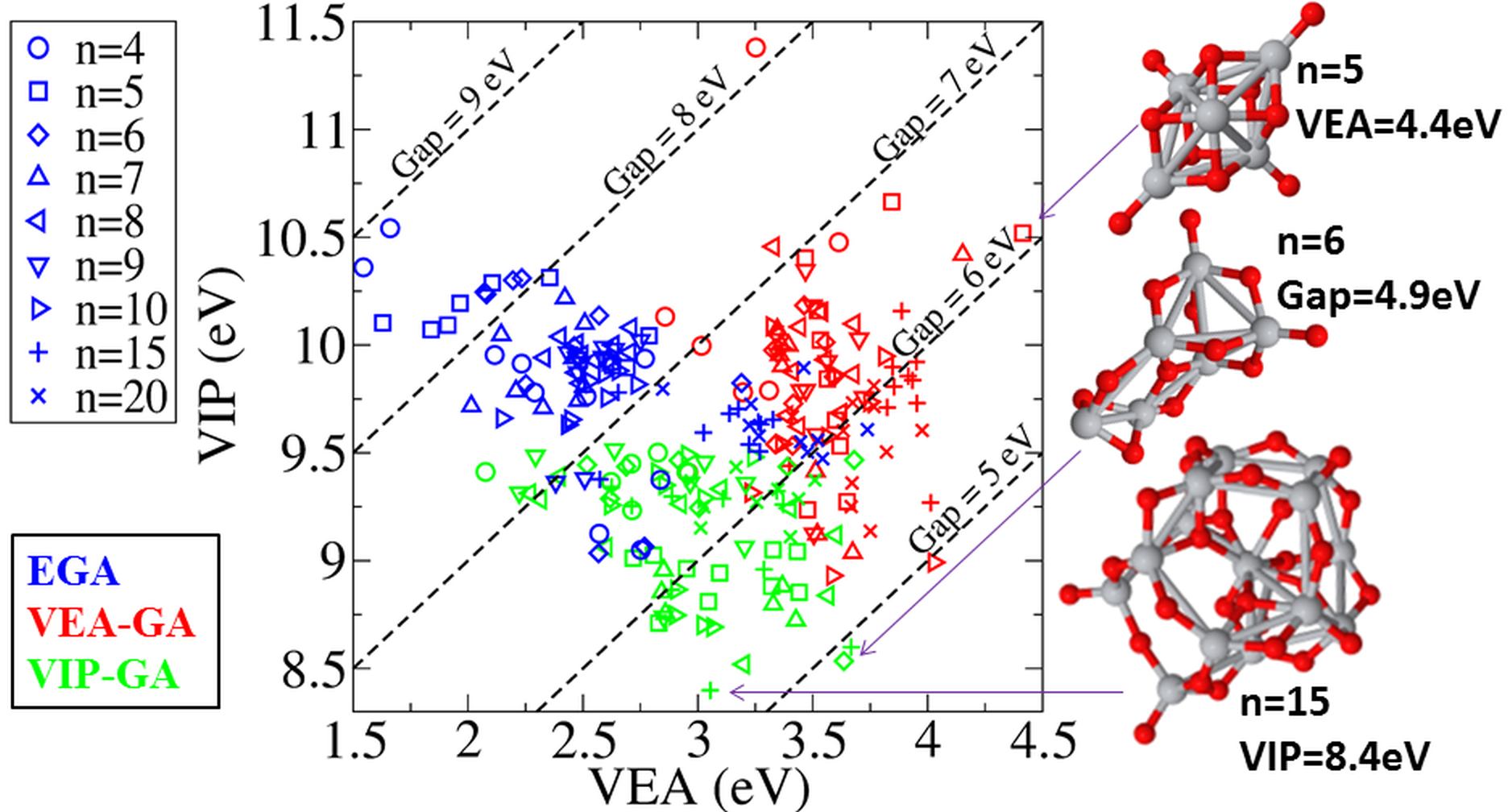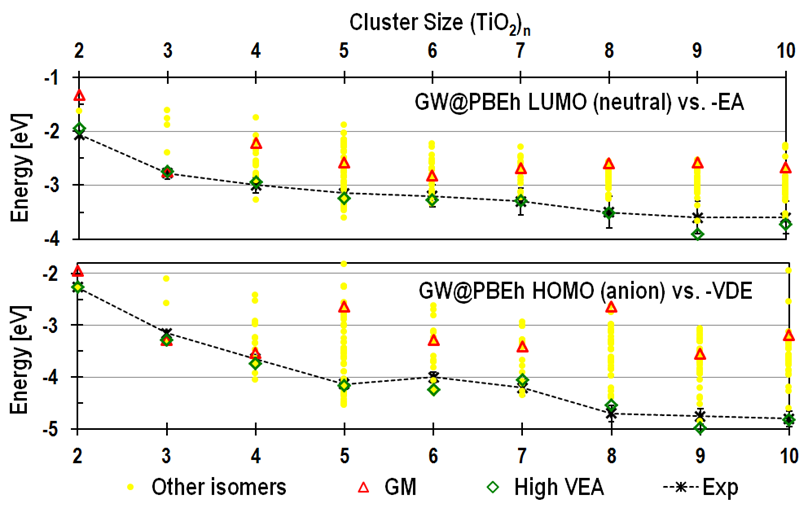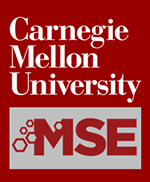Atomic Clusters
Clusters comprising up to few tens of atoms are an intermediate state of matter. Unlike molecules and crystalline particles, clusters do not have a regular structure. A cluster of a given size may have many different isomers, some of which may be close in energy. Clusters offer exciting prospects for designing new materials, owing to the strong dependence of their electronic properties on their size and structure. Clusters are considered as promising catalysts because they exhibit a higher reactivity than bulk materials. Even noble metals such as gold and platinum become highly reactive as clusters. Clusters may also serve as models to elucidate the structure and function of catalytically active sites on surfaces. We use property-based genetic algorithms to design clusters with catalytically active sites.
Related Publications
We implemented a suite of three property-based genetic algorithms (GAs) to search for (TiO2)n clusters with low energy (EGA), high vertical electron affinity (VEA-GA) and low vertical ionization potential (VIP-GA). Here, VIP vs. VEA are shown for the best 10 structures found by each GA for all cluster sizes. The loci of constant fundamental gap are indicated by diagonal lines. The electronic properties of the clusters do not exhibit the size trends predicted by quantum confinement theory. Rather, they depend on the presence of specific structural features. Phys. Rev. B 91, 241115(R) (2015).

We demonstrated that (TiO2)n clusters with a high vertical electron affinity (VEA) are in better agreement with photoemission spectroscopy experiments conducted on anions than the global minimum (GM) structures and explained the mechanism of selection for a high VEA. Phys. Rev. Lett. 108, 106801 (2012)


